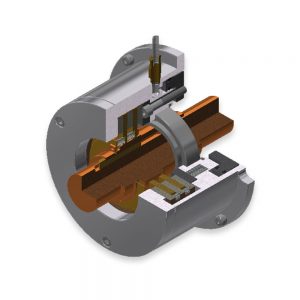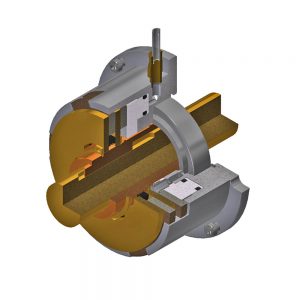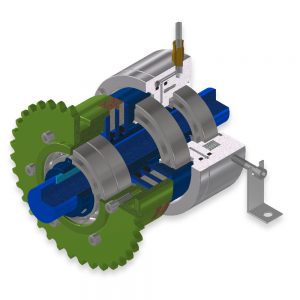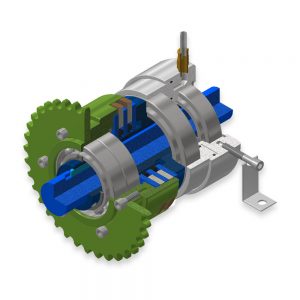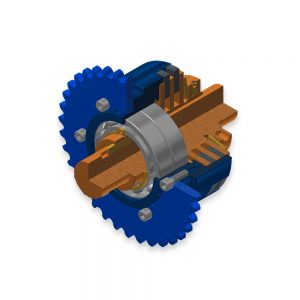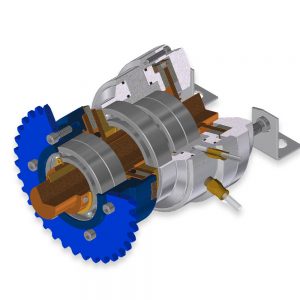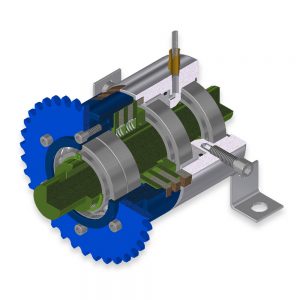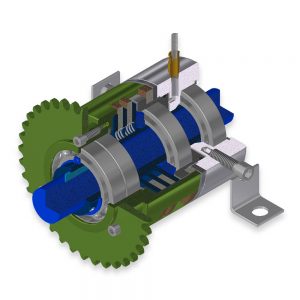How Our Products Work
Basic Principals of Operation of Friction Clutches, Brakes and Torque Limiters
Mach III products are used to transfer motion from one component of a machine to another. Friction is the force that transfers the energy from an input rotating member to the output member (clutches and torque limiters) or to the machine frame (brakes). Friction is created either by compressed air force or spring force squeezing a set of discs into contact. The disc set includes one or more friction discs and one or more drive discs that are alternately attached to the components which rotate constantly, and those that do not. The amount of torque transferred is linear in respect to force applied to the set of discs.
More details about torque capacity, calculation of torque requirement and other design engineering considerations can be found under Selection Guidelines.
How Each Product Type Works
The examples below represent each type of product available from Mach III.
